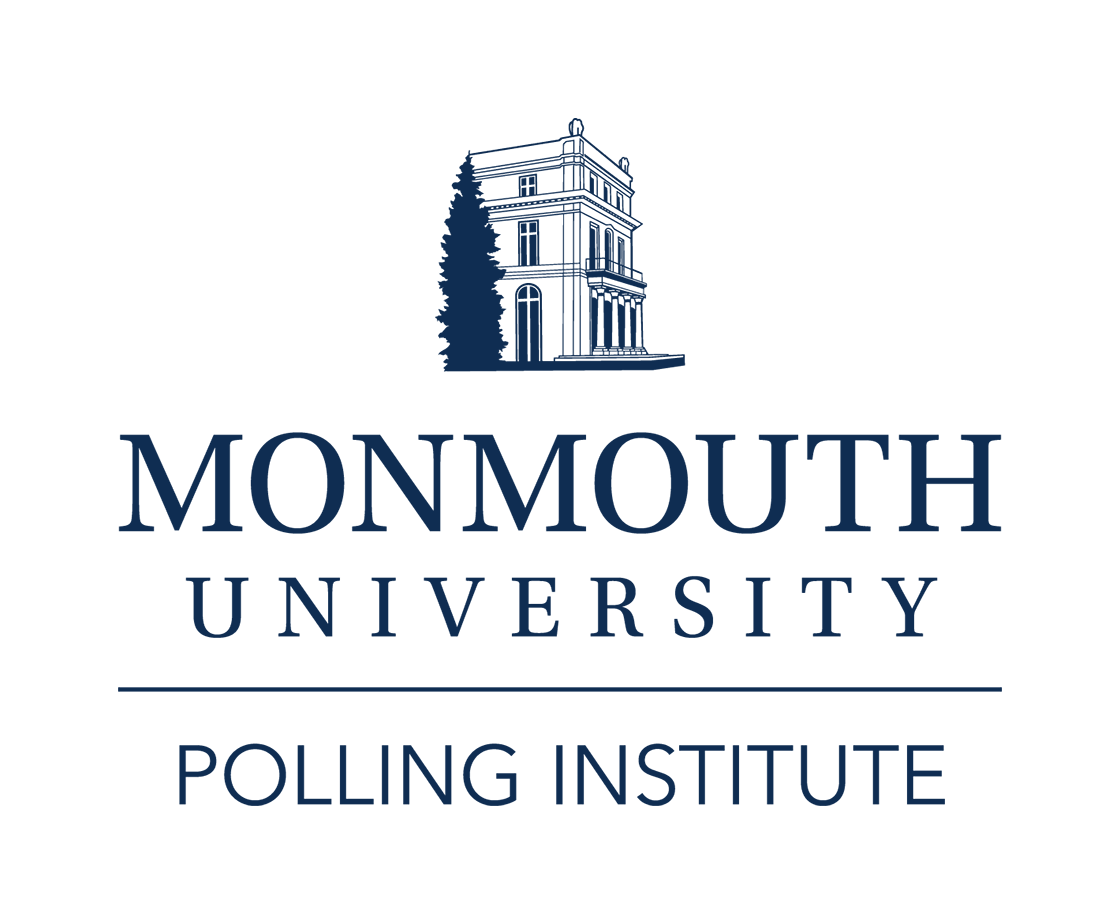West Long Branch, NJ – Hillary Clinton leads Bernie Sanders by 12 points in the upcoming New York Democratic primary. The Monmouth University Poll found that likely voters consider Sanders, who left the state after high school, as much of a New Yorker as Clinton, who has lived in the state for 16 years and was twice elected as its U.S. Senator.
Currently, 51% of likely Democratic primary voters in New York support Clinton compared to 39% who support Sanders. Another 9% do not have a candidate preference with just over a week to go before the election.
The race is basically tied among non-Hispanic white primary voters (48% for Sanders and 46% for Clinton), while Clinton enjoys a large lead among black, Hispanic and other voters (62% to 22%). Clinton holds a significant advantage among voters age 50 and older (57% to 36%), while the race is much closer among voters under 50 (45% for Clinton to 43% for Sanders).
Clinton earns similar levels of support across the state, including Manhattan and the Bronx (52%), Brooklyn and Queens (48%), Staten Island and the metro suburbs of Nassau, Suffolk, Westchester, Rockland, Orange, and Putnam counties (51%), and upstate New York (51%). Sanders performs better upstate (44%) and in the metro suburbs (41%) than he does in Brooklyn/Queens (36%) or Manhattan/Bronx (35%). However, 13% of primary voters in these four New York City boroughs say they do not have a candidate preference.
“It is worth noting that a significant number of minority voters in New York City are undecided. Based on past primaries, these should turn out to be Clinton voters, but Sanders is making an all-out appeal for their support,” said Patrick Murray, director of the independent Monmouth University Polling Institute.
Clinton’s service as New York’s senator helped sweep her to a 17 point victory over Barack Obama in the 2008 primary. She still receives largely positive marks from primary voters for her time in the Senate – 28% say she did an excellent job and 42% say she did a good job, compared to 20% who say she did an only fair job and just 7% who say she did a poor job.
It does not appear, however, that her time in office gives her much of a home state advantage over Sanders, a native son who moved out of Brooklyn after high school. Just 3-in-10 primary voters (29%) say they definitely consider Clinton to be a New Yorker, while 32% say they think of her as somewhat of a New Yorker. Another 35% say they do not really think of her as a New Yorker. The results for Sanders, who has represented Vermont in Congress for more than two decades, are similar. Nearly 3-in-10 primary voters (28%) say they definitely consider Sanders to be a New Yorker, while 30% say they think of him as somewhat of a New Yorker. Another 33% say they do not really think of him as a New Yorker.
“I’m sure the Clinton camp was hoping for a much bigger lead in her adopted home state, but any such advantage appears to be limited against Sanders,” said Murray.
A majority of likely Democratic primary voters (54%) say they are certain about their vote choice, with slightly more Sanders supporters (65%) than Clinton supporters (56%) saying their choice is locked in. Another 24% have a strong preference but are willing to change their minds, 6% have only a slight preference, and 16% say they really are undecided even if they name a candidate choice.
Sanders would have only a slight advantage over Clinton of holding on to the Democratic base in a general election campaign against another New Yorker, Donald Trump. Fully 84% of Democratic primary voters say they would back Sanders in November compared to just 6% who would vote for Trump. If Clinton was the Democratic nominee, 79% of Democratic primary voters say they would back her while 9% say they would vote for Trump.
The Monmouth University Poll was conducted by telephone from April 8 to 10, 2016 with 302 New York voters likely to vote in the Democratic presidential primary. This sample has a margin of error of ± 5.6 percent. The poll was conducted by the Monmouth University Polling Institute in West Long Branch, NJ.
DATA TABLES
The questions referred to in this release are as follows:
(* Some columns may not add to 100% due to rounding.)
1. If the Democratic primary election for president was today, would you vote for – [NAMES WERE ROTATED]
| April 2016 | |
| Hillary Clinton | 51% |
| Bernie Sanders | 39% |
| (VOL) Other | 1% |
| (VOL) Undecided | 9% |
| (n) | (302) |
2. Which of the following best describes where your decision stands at this moment: I am completely decided on which candidate I will support, I have a strong preference right now but I am willing to consider other candidates, I have a slight preference among a group of candidates I like, or I am really undecided among a number of candidates?
| April 2016 | |
| Already voted | 3% |
| Completely decided | 51% |
| Strong preference | 24% |
| Slight preference | 6% |
| Undecided | 16% |
[QUESTIONS 3 & 4 WERE ROTATED]
3. If Donald Trump became the Republican nominee and Hillary Clinton became the Democratic nominee, who would you vote for in the general election in November – Trump or Clinton or an independent candidate, or would you not vote for president?
| April 2016 | |
| Donald Trump | 9% |
| Hillary Clinton | 79% |
| Independent candidate | 8% |
| Would not vote | 2% |
| (VOL) Undecided | 2% |
4. If Donald Trump became the Republican nominee and Bernie Sanders became the Democratic nominee, who would you vote for in the general election in November – Trump or Sanders or an independent candidate, or would you not vote for president?
| April 2016 | |
| Donald Trump | 6% |
| Bernie Sanders | 84% |
| Independent candidate | 4% |
| Would not vote | 3% |
| (VOL) Undecided | 3% |
[QUESTIONS 5 & 6 WERE ROTATED]
5. Do you consider Hillary Clinton to be a New Yorker – definitely, somewhat, or not really?
| April 2016 | |
| Definitely | 29% |
| Somewhat | 32% |
| Not really | 32% |
| (VOL) Not at all | 3% |
| (VOL) Don’t know | 4% |
6. Do you consider Bernie Sanders to be a New Yorker – definitely, somewhat, or not really?
| April 2016 | |
| Definitely | 28% |
| Somewhat | 30% |
| Not really | 30% |
| (VOL) Not at all | 3% |
| (VOL) Don’t know | 8% |
7. How would you rate the job Clinton did when she was a U.S. Senator representing New York – excellent, good, only fair, or poor?
| April 2016 | |
| Excellent | 28% |
| Good | 42% |
| Only fair | 20% |
| Poor | 7% |
| (VOL) Don’t know | 3% |
The Monmouth University Poll was sponsored and conducted by the Monmouth University Polling Institute from April 8 to 10, 2016 with a statewide random sample of New York voters drawn from a list of registered Democratic voters, who participated in a primary election in 2012 or 2014 or voted in both of the last two general elections or have registered since 2014, and indicate they will vote in the presidential primary on April 19, 2016. The total sample of 302 likely voters includes 202 contacted by a live interviewer on a landline telephone and 100 contacted by a live interviewer on a cell phone, in English. Monmouth is responsible for all aspects of the survey design, data weighting and analysis. Final sample is weighted for age and gender based on state registration list information on the pool of voters who participate in primary elections. Data collection support provided by Braun Research (field) and Aristotle (voter list). For results based on the total sample, one can say with 95% confidence that the error attributable to sampling has a maximum margin of plus or minus 5.6 percentage points (unadjusted for sample design). Sampling error can be larger for sub-groups (see table below). In addition to sampling error, one should bear in mind that question wording and practical difficulties in conducting surveys can introduce error or bias into the findings of opinion polls.
| POLL DEMOGRAPHICS (weighted) | ||
| LIKELY DEMOCRATIC PRIMARY VOTERS | ||
| 42% Male | 20% 18-34 | 65% White |
| 58% Female | 27% 35-49 | 18% Black |
| 31% 50-64 | 13% Hispanic | |
| 22% 65+ |
4% Other | |
Click on pdf file link below for full methodology and results by key demographic groups.




